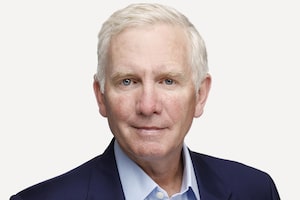The Peace Tower is reflected in a puddle.Adrian Wyld
The parade of recent polling results has some Conservatives giddy, and more than a few Liberals troubled.
This is to be expected since the results create a lens through which everything they do now is viewed. A party experiencing a bad patch of numbers watches as everything they do that isn't obviously brilliant is often ignored. Every slight misstep is caricatured and magnified in importance, used to explain their chronic failure.
Conversely, the party with the wind in its sails enjoys Midas-touch analysis. Little missteps are brushed off, and small successes enlarged to help explain that the party on top is in fact brilliantly run.
But there's plenty of reason for Conservatives to avoid euphoria and Liberals to step back from despair.
Underneath the surface of what often seems a pretty narrow trading range of weekly polling numbers, there is a fundamental truth about Canadian politics today that is reason for nervousness and hope on everyone's part.
Based on the exensive data gathered over the last three years by Harris Decima and The Canadian Press, my view is that the real "core" vote of the Conservative Party, the folks who won't consider voting any other way, is about 15 per cent. Roughly the same number can be claimed by the Liberals.
True, both parties can usually expect to assemble at least another 15 per cent support, but that support is nowhere near as assured as it was, and it doesn't always come from the same voters.
Most of these semi-attached voters, the second 15 per cent, fall into one of two categories. Some are hardcore pragmatists, truly up for grabs, evaluating the two parties on their current, not past, merits, and on the ideas they champion. These voters are the hardest to win, and arguably the most important to win, because they create momentum.
The rest are very, very lightly engaged by politics. They will vote, but won't spend a great deal of time evaluating their options in depth. Their decision will often turn on a sense of where the momentum is, or some idiosyncratic event like a rogue Reformer's intemperate comments, a Mountie investigation launched, a beer-and-popcorn reference, a particularly biting negative ad.
If some of you reading this piece think this idea of tiny core vote is implausible, since both parties consistently poll between 28 per cent and 38 per cent, ask yourself these questions.
Do most people you know have firm party attachments or not?
Have many of your friends struggled with the choice of which party to support in the last few elections?
Do you know more than a few people who pay little attention to the tough policy choices and react instead to the "entertainment values" of a campaign?
I'll wager the answer to all those questions point in the same direction.
And what it implies is that either of those two parties could experience extraordinary success or monumental collapse, the amount of soft and shifting vote is that great.
That's why the Conservatives, riding semi-high, need to avoid the twin evils of complacency and arrogance. And why the Liberals need to cauterize their wounds, quickly restore spring in their step, avoid stigmatization as the party of the doomed. They should believe in their potential to regain lost ground, while also being aware that they have not necessarily found a floor.
 Bruce Anderson
Bruce Anderson